13 Singers Who Shaped Music Videos Into Works of Art
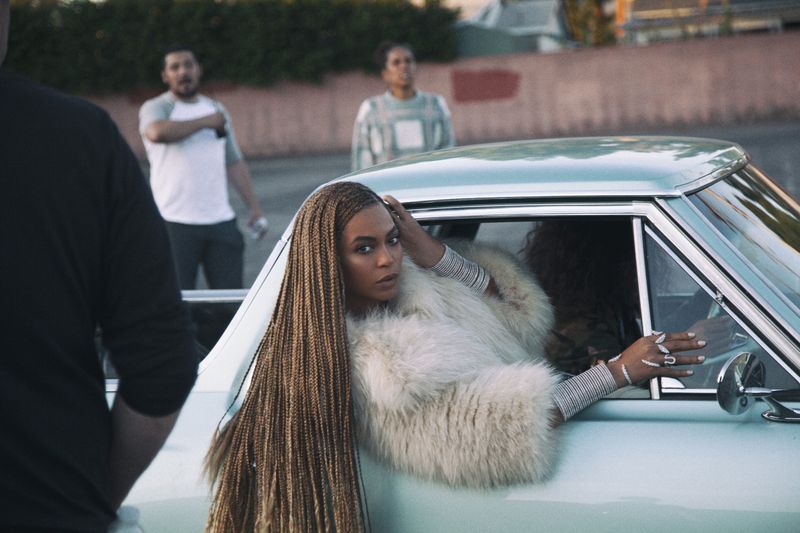
Music videos transformed from simple promotional tools into groundbreaking artistic expressions that can rival cinema. Since MTV’s launch in 1981, certain visionary artists have pushed boundaries, creating visual masterpieces that complement and enhance their music. These 13 singers didn’t just make catchy tunes – they revolutionized how we experience music by turning their videos into true works of art.
1. Michael Jackson – “Thriller” (1983)
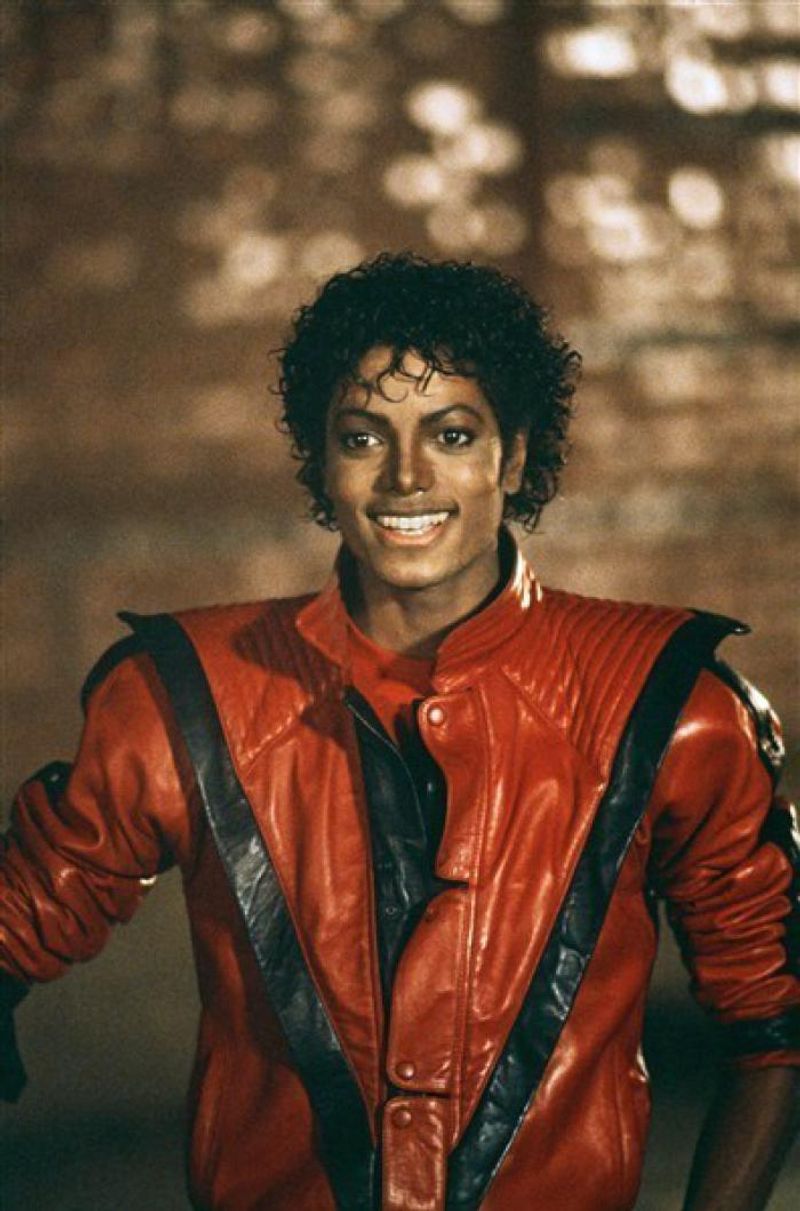
The King of Pop forever changed music videos with this 14-minute horror mini-movie. Director John Landis brought Hollywood production values to the small screen, complete with elaborate zombie choreography and Vincent Price’s iconic voiceover.
Before “Thriller,” music videos were simple performance clips. After it, they became cultural events worth anticipating. The transformation sequence where Michael becomes a werewolf showcased groundbreaking special effects that were previously reserved for feature films.
MTV played it twice an hour at fans’ request, proving audiences craved artistic ambition in music videos. The red leather jacket, the synchronized zombie dance, and those glowing yellow eyes created imagery that remains instantly recognizable decades later.
2. Madonna – “Like a Prayer” (1989)
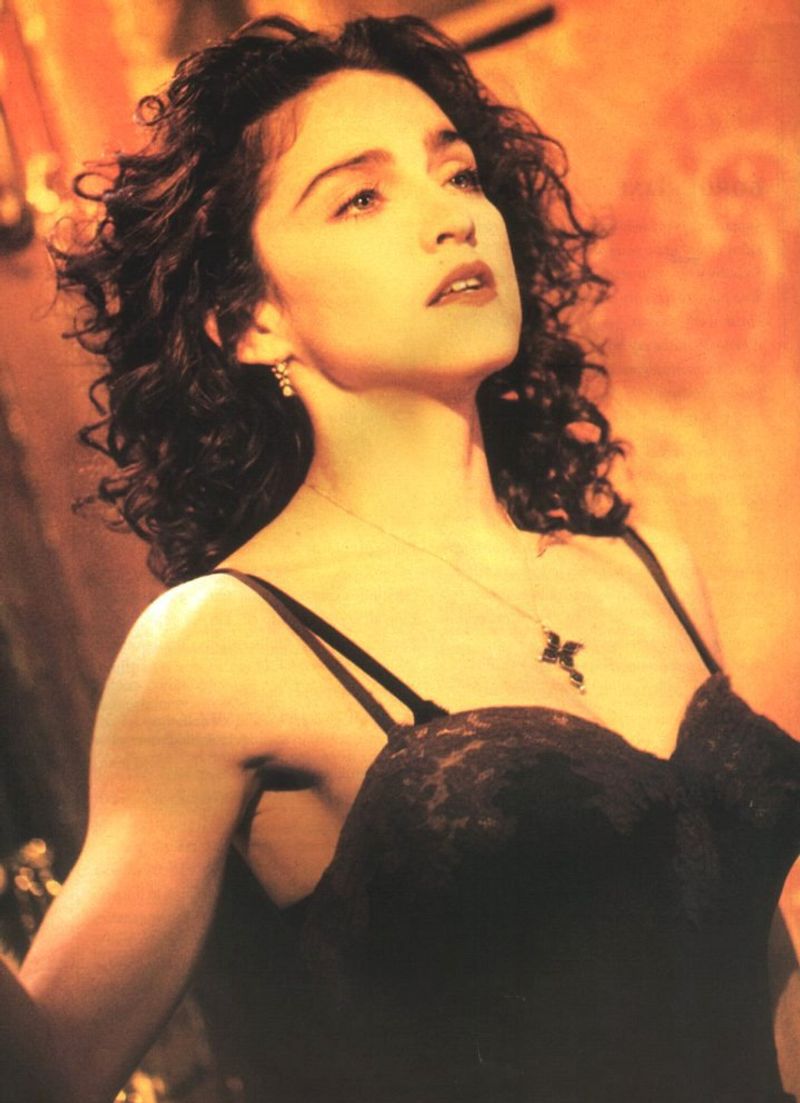
Religious symbols, burning crosses, and stigmata imagery created a perfect storm of controversy when Madonna unveiled this boundary-pushing masterpiece. The video’s interracial romance and blending of religious and indecent themes caused Pepsi to drop a million-dollar sponsorship deal with the singer.
Madonna’s artistic vision portrayed her kissing a Black saint who comes to life from a church statue. The provocative imagery wasn’t just for shock value – it told a powerful story about racism, false accusations, and spiritual awakening.
Director Mary Lambert crafted a visual narrative that felt more like arthouse cinema than a pop promo. Madonna’s fearlessness in combining faith and social commentary established her as an artist willing to sacrifice commercial interests for creative expression.
3. Prince – “When Doves Cry” (1984)
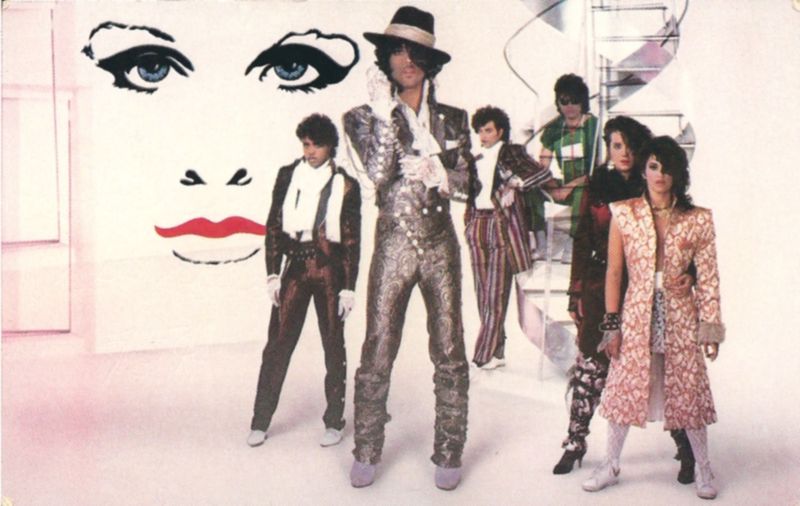
Opening with Prince emerging naked from a bathtub adorned with flowers, this groundbreaking video established him as a visual artist unafraid of vulnerability and sensuality. The Purple One created a dreamlike atmosphere that perfectly matched his revolutionary bassless track.
Director Larry Williams captured Prince’s androgynous beauty through ornate mirrors, baroque settings, and symbolic imagery. The doves represented purity amid scenes of emotional conflict, while the intercut shots from his film “Purple Rain” added narrative depth beyond a typical music video.
Prince’s ability to convey both masculine and feminine energy created a visual language that challenged gender norms of the 1980s. His artistic choices – from the Victorian bathtub to the flowing white shirt – established a distinctive aesthetic that countless artists would later try to emulate.
4. Beyoncé – “Formation” (2016)
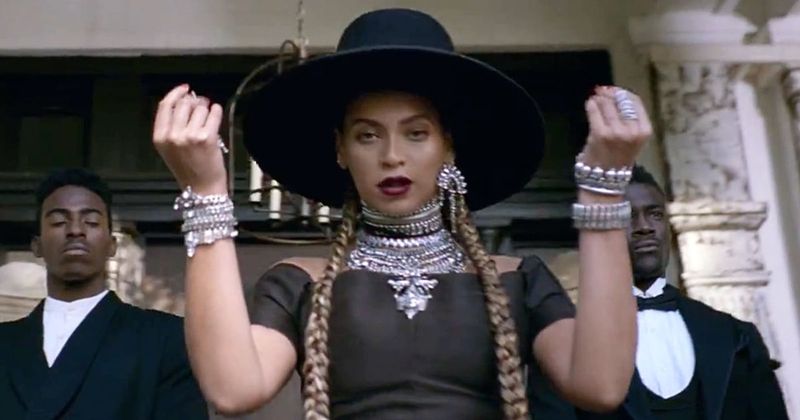
Released just before her Super Bowl performance, this visual manifesto sent shockwaves through popular culture with its unapologetic celebration of Black southern identity. Director Melina Matsoukas crafted a series of striking tableaux addressing police brutality, Hurricane Katrina, and Creole heritage.
Beyoncé appears atop a sinking New Orleans police car in one unforgettable scene. Other moments showcase antebellum mansions, Mardi Gras Indians, and Black cowgirls – all presenting a rich tapestry of African American cultural references rarely seen in mainstream music videos.
The Blue Ivy cameo and “I got hot sauce in my bag, swag” line became instant cultural touchpoints. By interweaving personal heritage with political statements, Beyoncé demonstrated how music videos could function as both art and activism, creating visual poetry that demanded multiple viewings to fully absorb.
5. Lady Gaga – “Bad Romance” (2009)
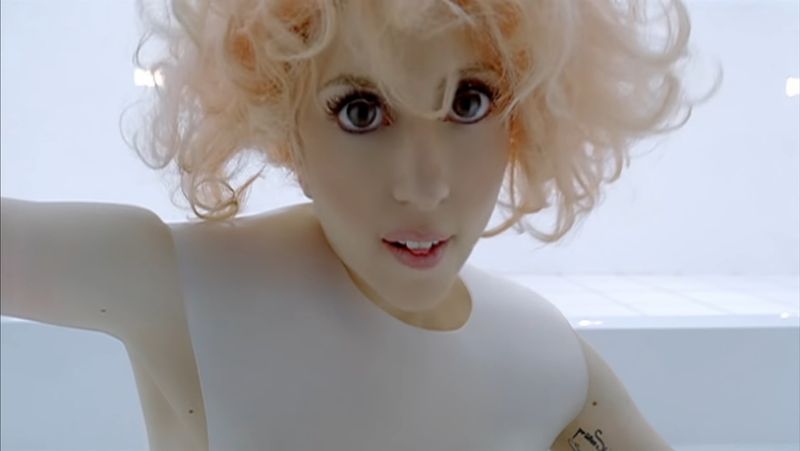
Fashion as performance art reached new heights when Gaga unleashed this surreal masterpiece. The stark white bathhouse setting, Alexander McQueen’s otherworldly costumes, and those famous wide-eyed contact lenses created a visual language that felt both futuristic and primal.
Director Francis Lawrence captured Gaga’s transformation from kidnapped victim to empowered avenger through a series of increasingly bizarre costume changes. The angular choreography, reminiscent of German expressionist film, created movements that looked simultaneously beautiful and disturbing.
The razor-blade sunglasses, skeletal spine outfit, and that final scene with the smoking skeleton established Gaga as pop’s most daring visual artist. By treating her body as a canvas for extreme fashion statements, she expanded what was possible in music videos, influencing countless artists to embrace avant-garde aesthetics.
6. David Bowie – “Ashes to Ashes” (1980)
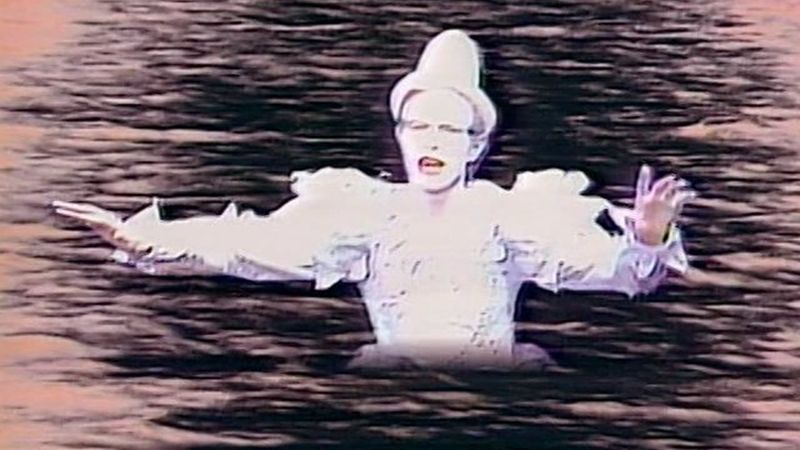
A year before MTV existed, Bowie created one of the most expensive and visually innovative videos ever made. The haunting return of his Major Tom character appears in a padded room, on a beach with a bulldozer, and in a bizarre funeral procession with Blitz Kids in outlandish costumes.
Director David Mallet employed solarization effects and negative color reversals that were revolutionary for the time. The stark black sky behind Bowie’s pierrot clown figure created imagery that seemed pulled from a surrealist painting rather than a rock promotion.
Bowie’s pioneering use of symbolism and dream logic established music videos as a legitimate art form. His willingness to revisit and reinterpret his own artistic past demonstrated how music videos could function as visual autobiography, creating a conversation between an artist’s present and past selves.
7. Bjork – “All Is Full of Love” (1999)
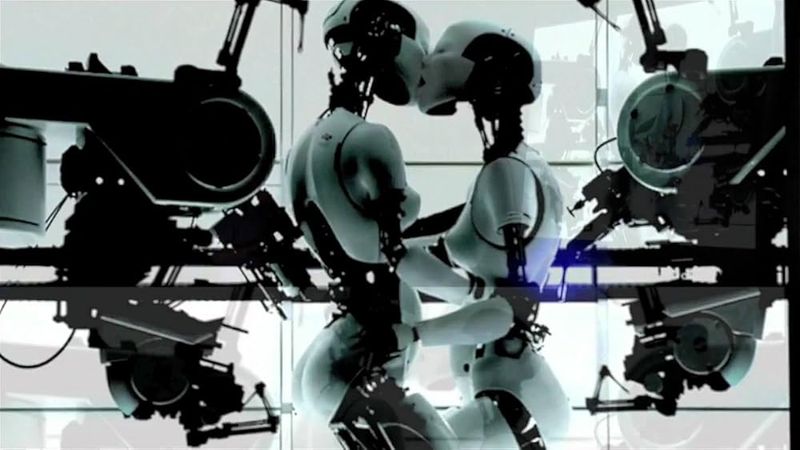
Two robot Bjorks tenderly embrace and kiss in this groundbreaking video that blurred the line between music promotion and digital art installation. Director Chris Cunningham created a clinical white environment where technology and intimacy merged into something hauntingly beautiful.
The seamless blend of practical effects and CGI was revolutionary for its time. The robots’ design – with visible hydraulics and cables but gentle, almost human movements – created a visual paradox that perfectly matched Bjork’s otherworldly voice and the song’s themes of universal love.
Museum exhibitions later featured this video alongside traditional artwork. By exploring the relationship between humanity and technology through a lens of tenderness rather than fear, Bjork and Cunningham created a visual experience that felt more like philosophical inquiry than mere entertainment – expanding what music videos could accomplish as an art form.
8. Kanye West – “Runaway” (2010)
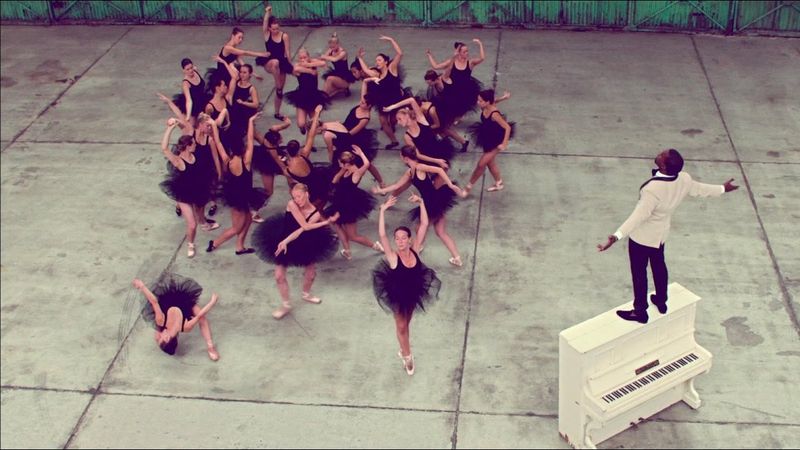
Abandoning traditional music video format entirely, West delivered a 34-minute art film featuring a fallen phoenix (model Selita Ebanks) who crashes to Earth and becomes his companion. The striking ballerina sequence, where dancers in black tutus perform atop a white floor, became one of the most iconic visual moments in modern music.
Director West used minimal dialogue, letting the visuals and music tell the story. The famous scene of Kanye playing a red-draped piano alone on a vast white stage, joined by dancers moving in slow motion, created a modern ballet that merged hip-hop with high art sensibilities.
The phoenix’s ultimate rejection of human society served as a metaphor for West’s own artistic journey. By expanding a single song into a cinematic experience with surrealist elements, West demonstrated how music videos could function as personal artistic statements worthy of serious critical consideration.
9. Rihanna – “We Found Love” (2011)
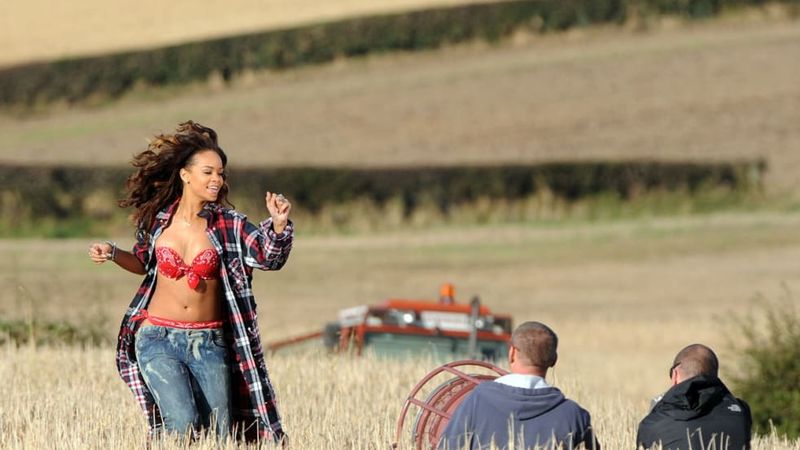
Raw emotion erupts through a toxic relationship story that unfolds like indie cinema rather than a glossy pop video. Director Melina Matsoukas captured the euphoric highs and devastating lows of a doomed romance through frantic editing, desaturated colors, and documentary-style intimacy.
The Northern Ireland setting provided a gritty backdrop for scenes of drug use, passionate arguments, and reckless behavior. Rihanna’s chemistry with model Dudley O’Shaughnessy created moments of such authentic intensity that viewers felt like voyeurs glimpsing a private relationship.
The visual motif of pills, spinning carnival rides, and frenetic dancing perfectly captured the song’s theme of finding love in a hopeless place. By embracing a narrative that didn’t shy away from the darker aspects of passion, Rihanna elevated music videos beyond escapist fantasy into emotional realism rarely seen in pop visuals.
10. Peter Gabriel – “Sledgehammer” (1986)
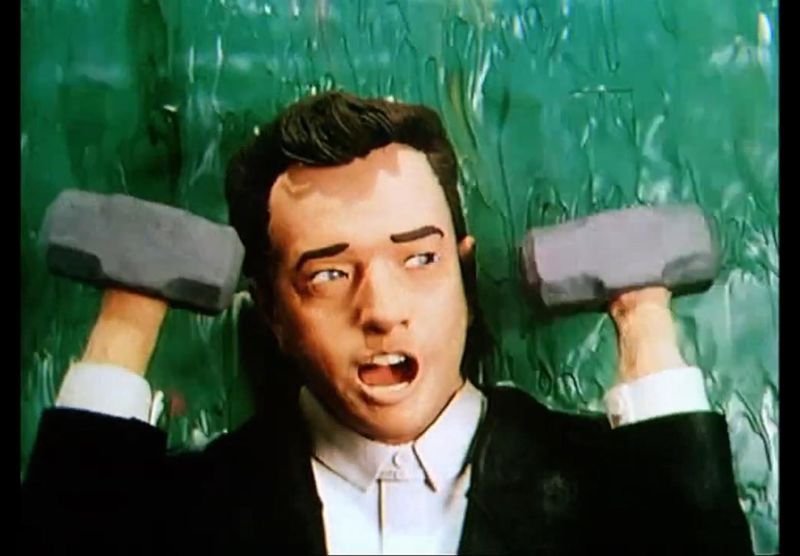
A triumph of stop-motion animation, this visual feast required Gabriel to lie under a glass plate for 16 hours while animators worked their magic frame by painstaking frame. Directors Stephen R. Johnson and the Aardman Animation team (later famous for Wallace and Gromit) created a surreal wonderland where Gabriel’s face transforms into fruit, seafood, and clay figures.
The dancing chickens, bumper cars made of meat, and the unforgettable sequence where Gabriel becomes a living anatomy chart demonstrated animation techniques rarely seen in music videos. The technical innovation earned nine MTV Video Music Awards – a record that still stands.
Gabriel’s willingness to surrender his image to animators’ imaginations showed remarkable artistic trust. By bringing together multiple animation styles – claymation, pixilation, and hand-drawn elements – this groundbreaking video expanded the visual vocabulary of music videos and influenced generations of animators.
11. Sia – “Chandelier” (2014)
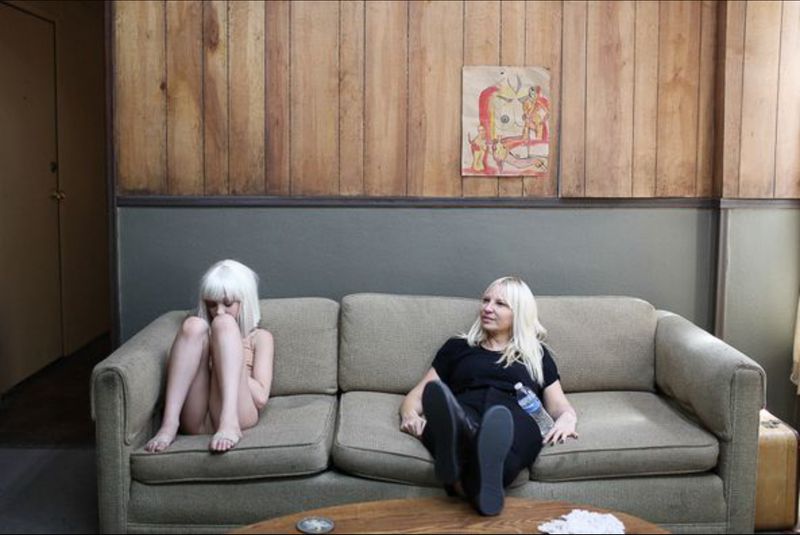
An empty apartment becomes a stage for then 11-year-old dancer Maddie Ziegler’s extraordinary performance in this video that redefined what dance could accomplish in music visuals. Director Daniel Askill’s decision to film in a single location with one performer created an intimacy that made the emotional impact all the more powerful.
Ziegler’s distinctive flesh-colored leotard and platinum blonde wig (matching Sia’s signature look) created an avatar through which the camera-shy singer could express herself. The choreography by Ryan Heffington blended contemporary dance with erratic, almost disturbing movements that perfectly captured the song’s themes of party girl desperation.
The video’s 2.8 billion views demonstrated how artistic simplicity could outperform big-budget productions. By focusing entirely on expressive movement rather than narrative or spectacle, Sia created a music video that functioned as both contemporary dance showcase and emotional catharsis.
12. Kendrick Lamar – “HUMBLE.” (2017)
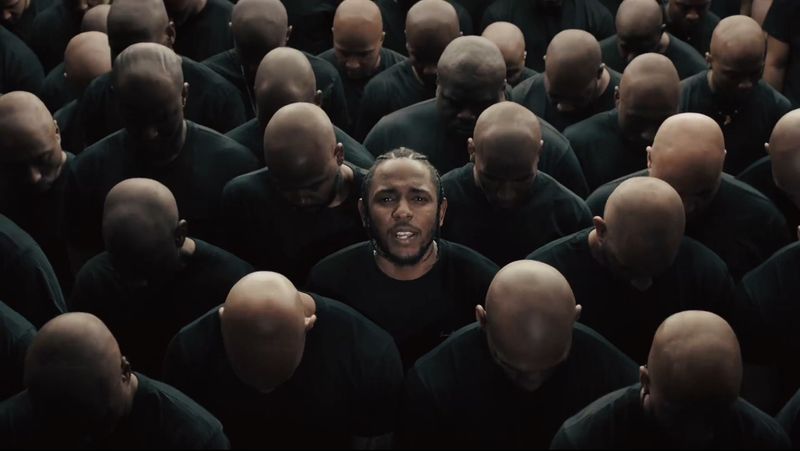
Religious imagery collides with social commentary in this visually stunning video where Lamar appears as a pope, has his head engulfed in flames, and recreates The Last Supper. Director Dave Meyers employed fish-eye lenses, split screens, and dramatic lighting to create a series of unforgettable tableaux.
The famous “natural” beauty sequence, where a woman’s hair and makeup transform with a swipe transition, sparked important conversations about beauty standards in the Black community. Other powerful scenes show Kendrick surrounded by identical figures in identical outfits – a visual commentary on conformity and authenticity.
The video’s technical innovations, like the overhead shot of Kendrick passing money between hands that seems to defy gravity, created visual puzzles that rewarded repeated viewing. By merging biblical references with contemporary social issues, Lamar created a hip-hop video that functioned as visual poetry with multiple layers of meaning.
13. Janet Jackson – “Rhythm Nation” (1989)
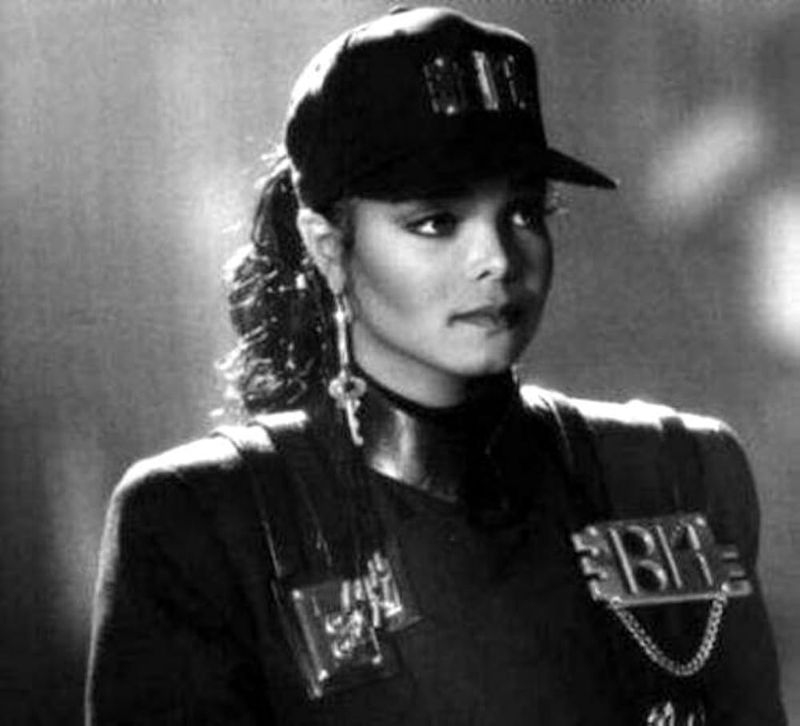
Industrial landscapes transform into precision dance floors in this black-and-white masterpiece that blended military imagery with social consciousness. Director Dominic Sena created a dystopian factory setting where Janet leads a uniformed dance army through some of the most influential choreography in music video history.
The famous breakdown section with its mechanical arm movements and hat choreography has been referenced and imitated countless times. The video’s militant aesthetic – black uniforms with metal accents, synchronized formations, and salute gestures – created a visual language that perfectly matched the song’s call for unity.
At seven minutes long, it functioned as a short film rather than a typical video. By combining social messaging with revolutionary choreography, Janet created a template for how music videos could merge entertainment with activism, influencing artists from Beyoncé to Janelle Monáe who would later blend dance with political statements.

Comments
Loading…